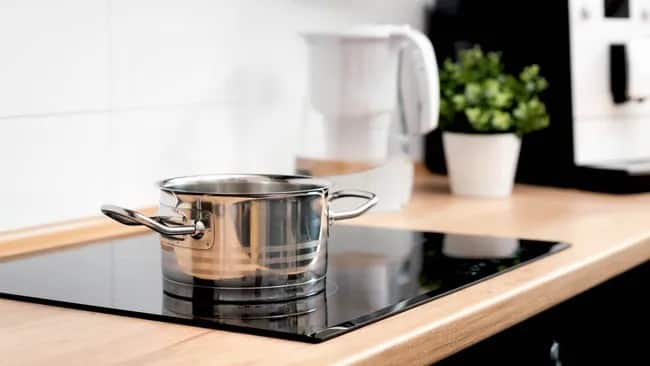
If you’re looking for a modern cooking solution, then look no further than the induction cooktop! These cutting-edge appliances offer a blend of efficiency, safety and precision temperature control that traditional gas and electric ranges just can’t compete with. The electromagnetic induction technology heats your cookware directly, resulting in faster, more efficient cooking times while reducing energy waste. And let’s not forget about the amazing response time! It’s a game-changer for any kitchen. So, why wait? Upgrade your cooking experience today with an induction cooktop! You’ll be glad you did!
It’s important to consider what pans you’re using with an induction cooktop, as they need to be made of ferromagnetic material to work effectively — such as cast iron or stainless steel. Proper maintenance of an induction cooktop is also key, to ensure its longevity and optimal performance.
This guide will walk you through the basics of using an induction cooktop, helping you make the most of your kitchen staple.
1. Check your cookware compatibility
Before using an induction cooktop, ensure you have suitable cookware. Induction cooking requires magnetic materials like cast iron or stainless steel. Test your pans with a magnet — if it sticks to the bottom, you’re good to go.
2. Turn on the cooktop
Locate the power button on the control panel and press it. The cooktop will display a ‘0’ icon on all cooking zone displays, indicating it’s ready for use. Some induction cooktops have a sliding scale that allows you to toggle the temperature setting, whereas other will feature plus or minus icons.
If you struggle to get your cooktop switched on, you could have a locked cooktop. Induction cooktops often lock themselves because they can heat up anything metallic that’s placed on top, whether it’s your keys or a kitchen gadget you’ve moved out of the way while cleaning. Your appliance will likely have a lock button that needs to be pressed down for a few seconds to allow it to start cooking.
3. Position your pan
Put your compatible cookware on the desired cooking zone. Press the ‘+’ symbol on the relevant zone to begin heating. The cooktop will detect the pan and start heating quickly. A faint buzzing or humming sound is normal during this process.
Induction cooktops work fast, but depending on the cookware you’re using, it could feel like this takes a while. If you opt for a cast iron skillet, be prepared to let your cookware pre-heat for a while.
4. Set and adjust the temperature
Start with a lower temperature and gradually increase as needed. Induction cooktops heat quickly, allowing for precise temperature control. Adjust the heat by pressing the plus or minus buttons as required during cooking.
Trust your intuition as you become accustomed to your new cooktop. If your meat takes a few minutes to start sizzling, don’t be tempted to crank the heat up, as you’d be surprised at how easily you can overcook things. Induction cooktops can boil water in around one minute, so once your cookware comes up to heat, you’ll get results fast!
5. Cook your meal
With the temperature set, you can now start cooking. Remember that induction cooking might be faster than what you’re used to with other stove types.
Something to be aware of with your induction cooktop is that your cookware will work at just about any point of the surface area, as long as it has magnetic coils to conduct heat to your pans. So if your dish moves around while cooking, it’s still going to be heated evenly.
6. Turn off the cooktop
When finished, reduce the heat to 0. Then locate the main power button and press it for a few seconds to turn the induction cooktop off. To be on the safe side, it could be worth locking your cooktop. This will mean you can rest your cookware on the stove while you serve, without the cooktop thinking you’re trying to heat it.
7. Be wary of residual heat
It’s really important to be aware of residual heat. Just because you’ve switched off the cooktop, doesn’t mean its cooled down completely. Pay attention to the indicator lights thats tell you when the surface is sufficiently cooled.
Induction cooktops usually cool down a lot faster than most electric and gas cooktops, because they heat your cookware directly as opposed to heating it via a cooking surface. Act with caution, but be prepared for this new advantage with your cooktop.
8. Clean after use
Once the surface has cooled, clean your induction cooktop by wiping down with a microfiber cloth and your preferred cleaning solution.
Don’t forget to read our guide on how to clean an induction cooktop for more guidance on this. It’s important to make sure you don’t use anything to abrasive, as these cooktops can scratch easily.

